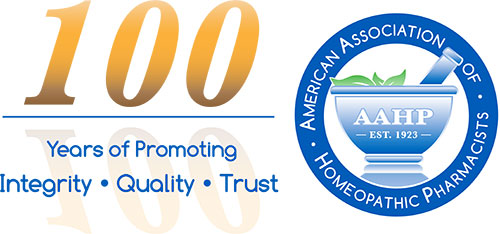Clearing the Air: Consider Slack-Fill
By Mark Land, AAHP President
Although the term might not be familiar, you may have been fooled by “slack-fill” as a consumer of many types of products at one time in your past. It’s the difference between the actual capacity of a container and the volume of the product inside. To prevent consumers being misled by partially filled or oversized containers, the U.S. Food and Drug Administration (FDA or the Agency) regulates how drug product containers are filled.1 The Food Drug and Cosmetic Act (FDCA) at 352 (i)(1) states: “If it is a drug and its container is so made, formed, or filled as to be misleading”.2 FDA has never adopted slack-fill regulations for non-food products, such as drugs and cosmetics. For these products, the only arguable FDA requirement concerning empty space remains the general statutory prohibition of “misleading” container fill.3
FDA language on misbranding of dietary supplements and cosmetics due to misleading fill are found at §§ 343(d) (foods), and 362(d) (cosmetics).4 FDA promulgated a final slack-fill rule in 1993 to “remedy the inadequate implementation” of the federal law concerning food containers that may mislead consumers.5 Regulation at 21 CFR§ 100.100 Misleading containers6 provides: that a food container that does not allow the consumer to fully view its contents shall be considered “misleading” under § 343(d) if it “contains nonfunctional slack-fill.” They also provide that slack-fill is not misleading if it exists for one of six “functional” reasons:
- "Protection of the contents of the package”;
- “The requirements of the machines used for [packaging]”;
- “Unavoidable product settling during shipping and handling”;
- “The need for the package to perform a specific function (e.g., where packaging plays a role in the preparation or consumption of a food)…”;
- “The fact that the product consists of a food packaged in a reusable container where the container is part of the presentation of the food and has [significant independent] value…”;
- “Inability to increase the level of fill or to further reduce the size of the package (e.g., where some minimum package size is necessary to accommodate required food labeling …, discourage pilfering, facilitate handling, or accommodate tamper-resistant devices).”
In addition to FDCA, the federal Fair Packaging and Labeling Act, 15 U.S.C. § 1471 et seq., authorizes FDA and the Federal Trade Commission (FTC) to promulgate regulations regarding “non-functional slack-fill of packages containing consumer commodities” if those agencies deem it necessary to prevent consumer deception.7 They have expressly declined to do so. FDA “chose not to elaborate how a container may be “made or formed” as to be misleading” because, in its view, they “would serve no useful purpose”.8 FTC “declined” to promulgate slack-fill regulations because it found no evidence of “wide-spread marketplace deception”.9 Some states—most prominently California, New York and Missouri—have adopted their own slack-fill laws that generally parallel federal standards.10 FDCA may preempt state slack-fill laws to the extent they do not precisely track federal law.11
Slack-fill litigation has been a significant trend within the food and beverage industry over the past several years. Approximately 300 slack-fill cases were filed between 2016 and 2017.12 Recently however, an increasing number of courts have shown a willingness to throw out slack-fill cases at the dismissal stage, increasing the confidence in companies to fight these often non-meritorious claims.13 Claims that consumers have been deceived into purchasing a package that has too much air, or slack-fill, have faced heavy criticism in both the court of law and the court of public opinion.14
Although the case law appears to be moving to a position slightly more in favor of manufacturers and brand owners, companies that currently manufacture, package, or sell products utilizing slack-fill should evaluate if their slack-fill meets one of FDA’s six “functional” criteria to decrease risk of litigation.15
Additionally, on Sept. 19, 2018, California Governor Jerry Brown signed an amendment to the slack-fill law that provides additional protection to manufacturers facing specious slack-fill allegations. The amendment added circumstances in which slack-fill will not be considered “nonfunctional”.16
Readers may look for a catchall safe harbor in terms of percentage of empty space. Those ratios don’t exist. Safe harbors established under FDA’s food regulations or individual state laws shall serve as your guide for compliance. If it's determined that the slack-fill is functional, be sure to document the regulatory decision-making process in reaching that conclusion.
References
1. American Herbal Products Association Slack-Fill Guidance. January 2019. http://www.ahpa.org/Portals/0/PDFs/2016%20PDFS/AHPA_Slack-Fill_Guidance.pdf
2,4. Federal Food Drug and Cosmetic Act 21 U.S.C. §352 (i)(1). https://www.govinfo.gov/app/details/USCODE-2010-title21/USCODE-2010-title21-chap9-subchapV-partA-sec352
3,5. Knobler, J., Simeone, J.A., “Slack-Fill” Cases Coming Up Empty. Lexology, March 21, 2019. https://www.lexology.com/library/detail.aspx?g=68386235-9ae5-42cd-bd54-fc76b4333428
6. United States Food and Drug Administration Code of Federal Regulations Title 21 Section 100.100 Misleading containers. https://www.accessdata.fda.gov/scripts/cdrh/cfdocs/cfcfr/CFRSearch.cfm?fr=100.100
7. The federal Fair Packaging and Labeling Act, 15 U.S.C. https://www.ftc.gov/enforcement/rules/rulemaking-regulatory-reform-proceedings/fair-packaging-labeling-act
8. United States Food and Drug Administration 58 Fed. Reg. 2957, 2960 (Jan. 6, 1993). [Docket No. 92N-0383] Misleading Containers; Nonfunctional Slack-Fill proposed rule. https://cdn.loc.gov/service/ll/fedreg/fr058/fr058003/fr058003.pdf
9. Federal Trade Commission 80 Fed. Reg. 5491, 5494 (Feb. 2, 2015) 6 CFR Parts 500 and 502 RIN 3084–AB33 General Policy or Interpretation and Exemptions Under the Fair Packaging and Labeling Act notice of proposed rulemaking. https://www.govinfo.gov/content/pkg/FR-2015-02-02/pdf/2015-01629.pdf
10. California Business and Professions Code §§ 12606, 12606.2 https://leginfo.legislature.ca.gov/faces/codes_displaySection.xhtml?lawCode=BPC§ionNum=12606.2
11,12,13 Shah, M., et.al., Recent Developments Have Let the Air Out of Slack Fill Lawsuits. Law.com, New York Law Journal. https://www.law.com/newyorklawjournal/2018/05/18/recent-developments-have-let-the-air-out-of-slack-fill-lawsuits/?slreturn=20190806144805
12,13,16 Diamantes, K. A., Baker Donelson. Cutting Some Slack? How to Avoid Slack Fill Litigation. https://www.bakerdonelson.com/cutting-some-slack-how-to-avoid-slack-fill-litigation
12,13 Cart, J.P. Three Slack Fill Regulatory Changes for Manufacturers to Watch. The National Law Review. Jan. 22, 2019. https://www.natlawreview.com/article/three-slack-fill-regulatory-changes-manufacturers-to-watch
14 Alce v. Wise Foods, No. 17-cv-02402 (S.D.N.Y. March 27, 2018).
15. Keller and Heckman LLP. Finally Fed Up with Private Plaintiffs Litigating over Empty Space, California Amends Slack Fill Law. Nov. 8, 2018 https://www.khlaw.com/Finally-Fed-Up-with-Private-Plaintiffs-Litigating-over-Empty-Space-California-Amends-Slack-Fill-Law
16. Gregg, B. Slack-Fill Litigation Heats Up. Corporate Counsel Business Journal. https://ccbjournal.com/articles/slack-fill-litigation-heats
